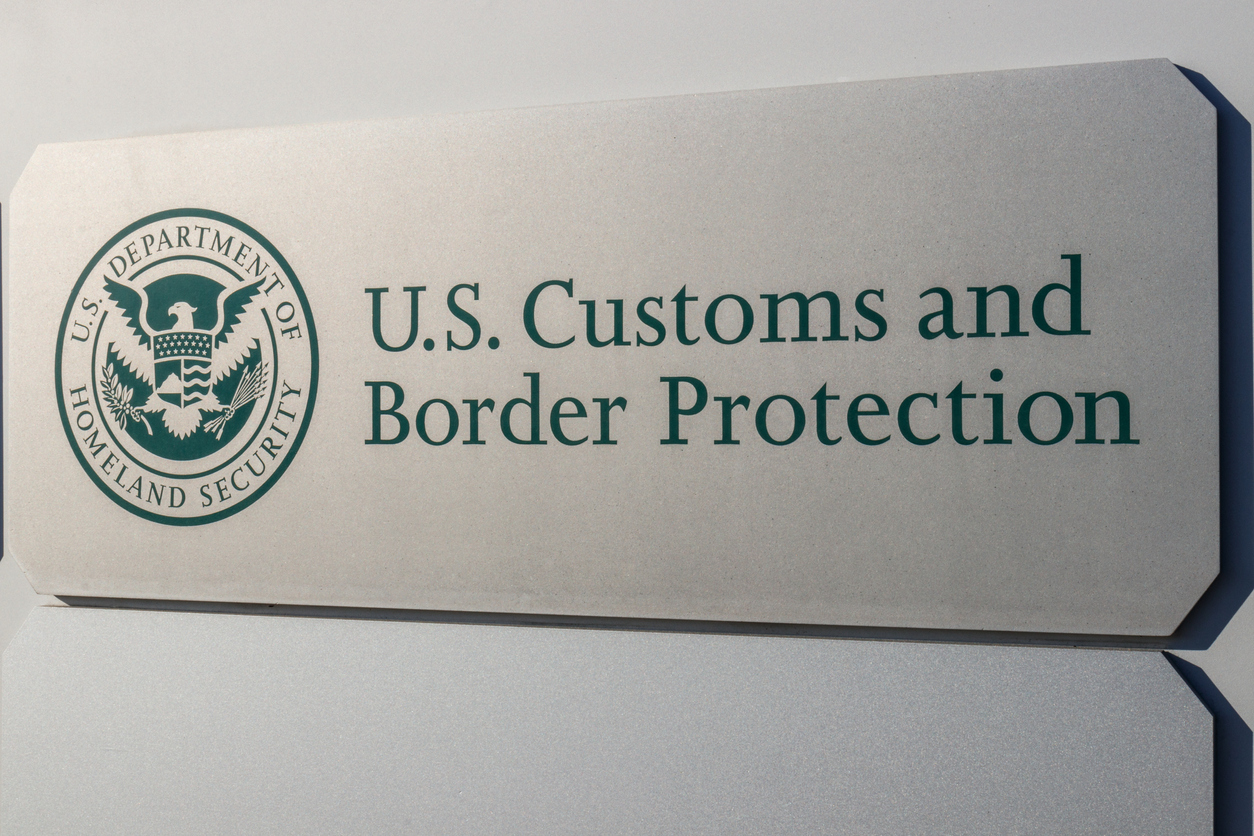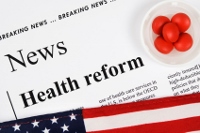
On Friday, April 1, the Centers for Disease Control and Prevention (CDC) announced plans to lift the emergency public health order which has restricted immigration at the nation’s borders since the beginning of the pandemic.
The order, known as Title 42 for the section of the federal code under which it was enacted, was originally put in place by the Trump administration on March 20, 2020. It was renewed by the Biden administration on August 2, 2021.
Title 42 allows for the immediate expulsion of migrants and asylum seekers at the United States’ land border crossings under powers afforded the executive branch through the Public Health Service Act, rather than managing their processing under immigration laws.
In signing the original order, then CDC director Robert Redfield, M.D., described it as “necessary to protect the public health from an increase in the serious danger of the introduction of Coronavirus Disease 2019 (COVID-19) into the land POEs [point of entry], and the Border Patrol stations between POEs, at or near the United States borders with Canada and Mexico.”
Redfield emphasized the potential for spread of COVID in the congregant settings in which migrants or asylum seekers would otherwise be held under immigration policies under Title 8 of the U.S. Code. He wrote that the common areas of immigration processing facilities, where individuals would be “in close proximity to one another, for hours or days, as they undergo immigration processing… were not designed for, and are not equipped to, quarantine, isolate, or enable social distancing by persons who are or may be infected with COVID-19.”
Similar language was employed in the Biden Administration’s extension of the order when the CDC, under the direction of Rochelle Walensky in 2021, stated that “introduction of such noncitizens, regardless of their country of origin, migrating through Canada and Mexico into the United States creates a serious danger of the introduction of COVID-19 into the United States.”
As enacted under U.S. Customs and Border Protection policy, “persons subject to the order (were) not… held in congregate areas for processing and instead (were) immediately… expelled to their country of last transit,” in order to “help prevent the introduction of COVID-19 into border facilities and into the United States.”
Opposition
Title 42 has been controversial from the outset. Critics have faulted it as contrary to recommendations of the United Nations Human Rights council released in April of 2020 which cautioned that “(b)order closures may also be detrimental to public health interests.” Public health and human rights advocates noted that equivalent restrictions were not put in place for immigrants and asylum seekers arriving by plane or ship, even though the CDC recognized that the congregant nature of such modes of transportation presented a greater risk for spread than did travel by land.
The advocacy group Physicians for Human Rights has argued that there is “simply no epidemiological evidence to justify banning only asylum seekers from the United States while keeping the borders open to other travelers.” They were supported in their opposition by academics from some of the nation’s leading schools of public health.
When Title 42 restrictions were enacted under the Trump administration, critics characterized them as politically motivated, a talking point that echoed throughout the 2020 presidential campaign. It came as a surprise to many supporters that President Biden did not take immediate steps to rescind Title 42 upon taking office in 2021. In fact, even after making an exemption for unaccompanied minors in February 2021, the Biden administration has continued to maintain that Title 42 is a public health directive, “not an immigration or migration enforcement measure.” Speaking in El Paso last summer, Department of Homeland Security secretary Alejandro Mayorkas characterized the continuation of Title 42 as a “public health imperative.”
Legal arguments
Title 42 has been challenged in court with some degree of success. In Huisha-Huisha v. Mayorkas, a federal court originally issued an injunction against the expulsion of migrant families at land borders under Title 42. A subsequent decision of the United States Court of Appeals for the District of Columbia Circuit acknowledged the federal government’s right to expel migrants under a public health order but noted that “from a public-health perspective, based on the limited record before us, it’s far from clear that the CDC’s order serves any purpose.”
Title 42 section 265 states that
Whenever the Surgeon General determines that by reason of the existence of any communicable disease in a foreign country there is serious danger of the introduction of such disease into the United States, and that this danger is so increased by the introduction of persons or property from such country that a suspension of the right to introduce such persons and property is required in the interest of the public health, the Surgeon General, in accordance with regulations approved by the President, shall have the power to prohibit, in whole or in part, the intro- duction of persons and property from such countries or places as he shall designate in order to avert such danger, and for such period of time as he may deem necessary for such purpose.
For some legal scholars including Ilya Shapiro and Ilya Somin of the Cato Institute, the use of the word “introduction” is critical. In an amicus brief filed in Huisha-Huisha, they argued that it is impossible to prevent the “’introduction’ of COVID-19 into the United States for the simple reason that it is already here, and already widespread.” In an October 2021 interview on CNN, Anthony Fauci observed that, “Certainly immigrants can get infected, but they’re not the driving force of this, let’s face reality here.”
CDC rationale
In lifting the order last week, Rochelle Walensky stated that the agency is no longer worried that the entry of immigrants or asylum seekers “will result in the introduction, transmission, and spread of COVID-19” and that “a suspension of the introduction of covered noncitizens no longer required in the interest of public health.”
The CDC listed low community COVID levels, reduced strain on the nation’s healthcare systems and resources, the availability of mitigating measures, and “numerous” non-pharmaceutical and pharmaceutical interventions to decrease the spread and severity of COVID-19 in congregate settings among its reasons for lifting the order. The agency included tests, vaccines and boosters, and treatments in its list of mitigating measures.
In addition, migrants in Customs and Border Protection Custody will begin to be offered COVID vaccinations under a new program to be phased in starting this week. The Biden administration expects that as many as 6,000 migrants will be vaccinated daily by early summer.
Continuing controversy
To allow the Department of Homeland Security time to prepare, the CDC does not plan to lift the order until May 23. A White House spokesperson has acknowledged that lifting restrictions will result in “an influx” of immigrants. Arizona senators Mark Kelly and Kristen Sinema, both Democrats, argued that “(p)rematurely ending Title 42 without a comprehensive, workable plan would put at risk the health and safety of Arizona communities and migrants.”
Republicans have pointed to what they see as inconsistencies in the administration’s COVID policies. In a tweet last week, House Minority Leader Kevin McCarthy (R-Calif.) observed, “President Biden is ending Title 42—which prohibits the entry of immigrants who pose health risks. Yet Americans are still required to wear masks on planes.”
On April 3, three states—Arizona, Louisiana, and Missouri—filed suit to block the lifting of Title 42 restrictions, calling doing so “an imminent, man-made, self-inflicted calamity.” They claim that in not taking public comments on the recission of the orders the CDC has failed to meet the requirements for rulemaking under the Administrative Procedure Act. Noting that the Biden administration has kept in place masks mandates on public transportation and continues to pursue vaccine requirements for federal employees and contractors, the plaintiffs argue that “(t)itle 42 Revocation thus stands as a radical outlier—seemingly the only COVID-19-based restriction the Administration sees fit to end.”
A reversible decision
News of the CDC’s recission of Title 42 restrictions comes as the United States braces for an uptick in COVID cases caused by the BA.2 subvariant of the Omicron variant and three days after the CDC recommended a second COVID booster shot for people over the age of 50 and certain high risk populations.
But the CDC left itself an out: In announcing recission of Title 42, Walensky specified that “(n)othing in this Termination will prevent me from issuing a new Order under 42 U.S.C. §§ 265, 268 and 42 C.F.R. § 71.40 based on new findings, as dictated by public health needs.”
